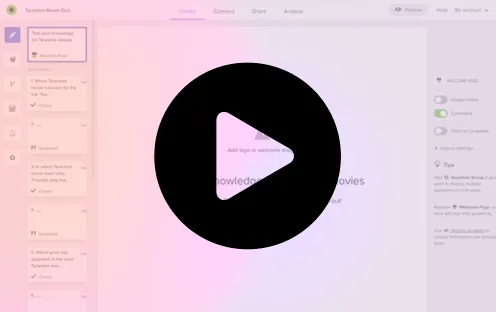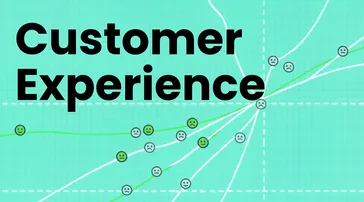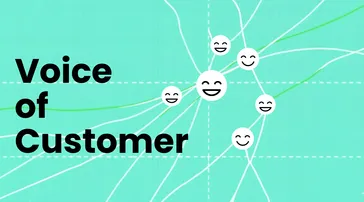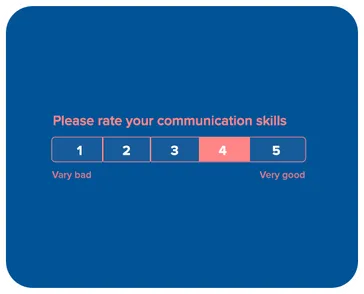5 min read

WhatsApp isn’t just for chats—it’s also one of the fastest channels for collecting feedback. But results depend on the quality of your WhatsApp survey questions: they must be short, clear, and easy to answer on mobile.
Below you’ll find ready-to-use WhatsApp survey questions (plus examples for WhatsApp polls). If you want to send them at scale and track results automatically, use a dedicated tool for WhatsApp surveys.
Why use WhatsApp for surveys?
WhatsApp boasts over 2 billion users worldwide, making it a powerful tool for reaching a broad audience. Its features—such as instant messaging, multimedia sharing, and group chats—make it ideal for quick and interactive surveys.
Additionally, WhatsApp’s casual nature makes respondents more likely to participate and provide honest feedback. It meets customers where they already are, removing the friction of email or external links.
Check out our guide on how to create a quiz on WhatsApp for more engagement ideas.
Crafting the perfect WhatsApp survey questions
To maximize the effectiveness of your WhatsApp surveys, consider using these specific types of questions optimized for mobile chat:
1. Multiple-choice Questions
Multiple-choice questions are straightforward and quick to answer, perfect for WhatsApp’s fast-paced nature. Users can reply with a single letter or tap an option in a poll.
Example:
“Which of the following features do you use the most in our app? A. Live Chat B. Notification Alerts C. User Profiles D. Settings Menu”
2. Rating Scale Questions
Rating scales help gauge opinions or satisfaction levels on a numerical scale, offering quantifiable data. Keep scales simple (1-5 or emojis) for mobile screens.
Example:
“On a scale of 1-5, how satisfied are you with our customer service? ⭐️”
3. Yes/No Questions
These questions are easy to answer and analyze, providing clear-cut insights. They work great as the first question to start a conversation.
Example:
“Did you find our recent update useful? Yes or No.”
4. Open-Ended Questions
Open-ended questions allow respondents to express their thoughts in detail. Use these sparingly on WhatsApp as typing long answers on a phone can be tedious.
Example:
“What is the ONE thing we could improve in our next update?”
5. Demographic Questions
Understanding your audience’s demographics can help you tailor your services better. Keep these optional or use a linked form if you need many details.
Example:
“What is your age group? A. Under 18 B. 18-25 C. 26-35 D. 36-45 E. 46 and above”
Tips for effective WhatsApp surveys
- Keep it short and simple: Long surveys can be overwhelming. To maintain engagement, aim for 3-5 questions max directly in chat.
- Be clear and concise: Avoid jargon and ensure your questions are easy to understand at a glance.
- Use multimedia: Enhance your surveys with images, videos, or voice notes to make them more engaging.
- Personalize messages: Address recipients by name to make the survey more personal.
- Offer incentives: Small rewards or incentives can boost participation rates.
Comparison: Manual vs. Automated WhatsApp Surveys
| Feature | Manual WhatsApp Chat | Responsly Automated Surveys |
|---|---|---|
| Scale | 1-on-1 interactions | Unlimited bulk sending |
| Response Tracking | Manual spreadsheet | Real-time dashboard |
| Survey Logic | None | Skip logic & branching |
| Question Types | Text only | Rich media, ratings, NPS |
| Effort | High (copy-paste) | Low (automated) |
Examples of WhatsApp survey questions by use case
Here are ready-to-use templates for common business scenarios.
Customer Satisfaction (CSAT)
- “How would you rate your overall experience with our service on a scale of 1-10? 🌟”
- “What do you like most about our product?”
- “Is there anything we can do to improve your experience?”
Product Feedback
- “How often do you use our app? (Daily/Weekly/Monthly)”
- “What feature do you find most useful?”
- “Are there any features you wish we had?”
Market Research
- “Which of the following brands do you use regularly?”
- “How do you usually discover new products? A. Social Media B. Friends/Family C. Advertisements D. Other”
Event Feedback
- “Did you attend our recent webinar? Yes or No.”
- “What was your favorite part of the event?”
- “Would you attend future events we host?”
How Responsly Improves WhatsApp Surveys
While you can send questions manually, using Responsly takes your WhatsApp feedback to the next level. Responsly allows you to:
- Design mobile-first surveys that look great on WhatsApp.
- Distribute automatically to thousands of contacts via WhatsApp Business API.
- Analyze sentiment with AI to understand open-ended replies instantly.
- Close the loop by integrating feedback directly into your CRM.
Ready to start engaging your customers where they are? Create your free account and launch your first WhatsApp survey today!
Conclusion
When done right, WhatsApp surveys can provide valuable insights quickly and efficiently. The key lies in crafting questions that are engaging, easy to answer, and relevant to your objectives. By utilizing the best practices and examples provided, you can ensure your WhatsApp surveys are a success, helping you gather the feedback you need to improve your services and better understand your audience.






